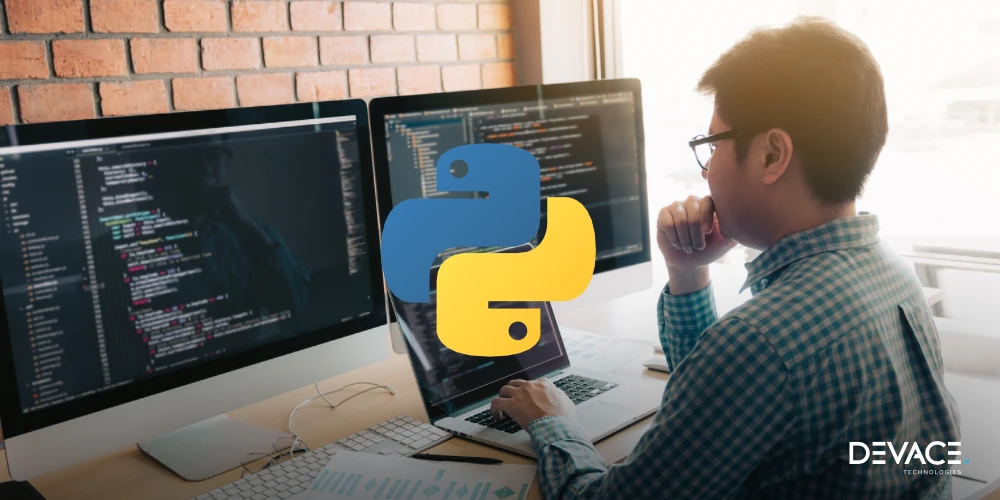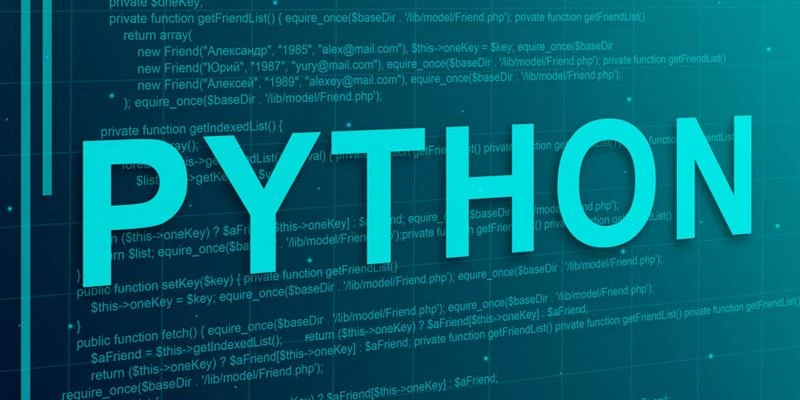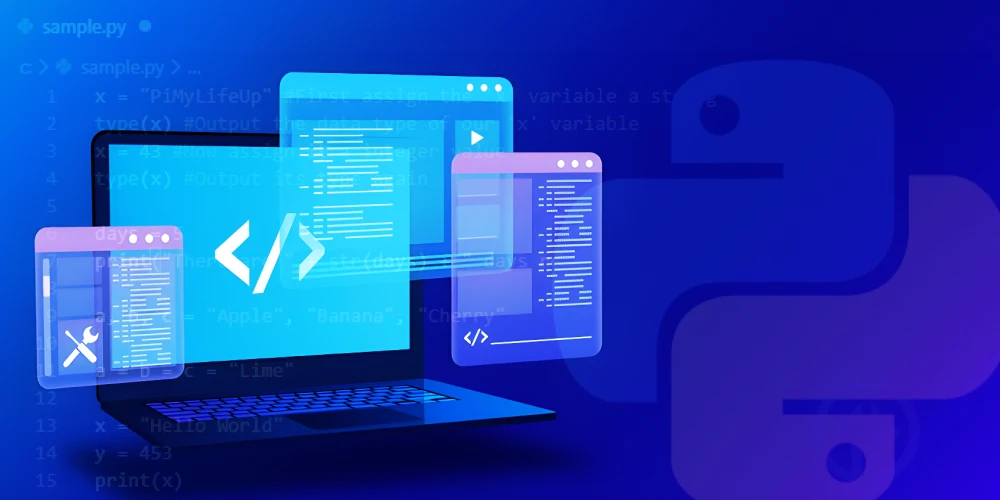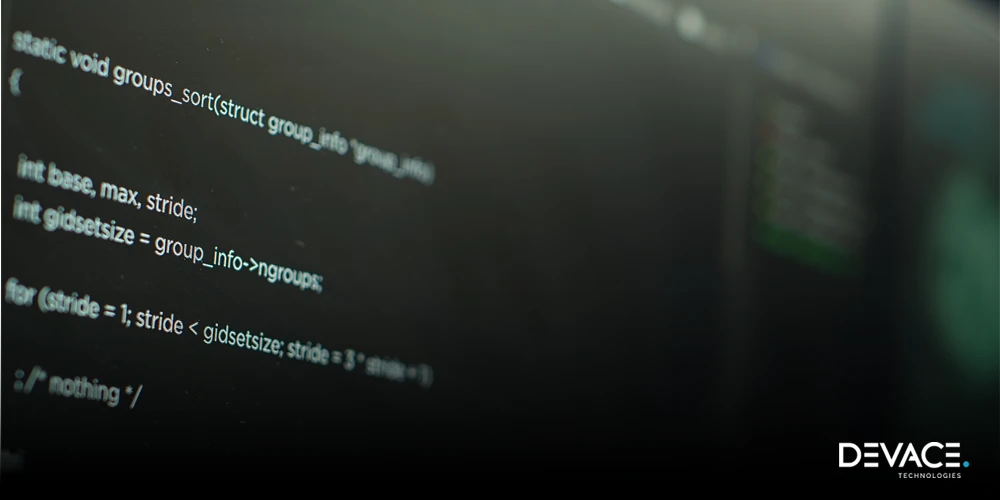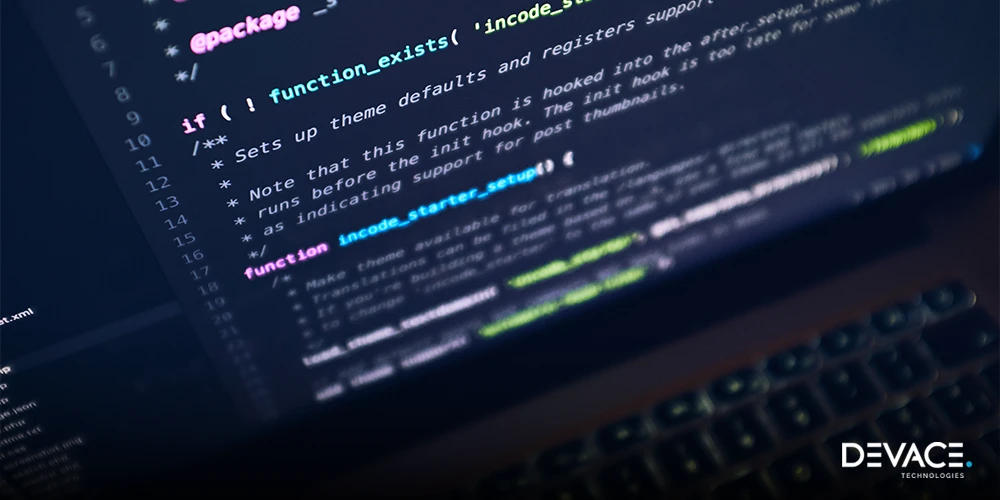Writing efficient, maintainable, and clean code is important for beginners as well as experts for creating a website that speaks for its top-notch performance. From code readability to execution and performance, how you write code really matters. If you write clean code for website development, you not only enhance website overall performance but also reduce errors and bugs, leading to scalability.
In this, we discuss the top 10 Python coding practices that can help your website stand out. So, whether you’re working on a small project or a complex application, these tips will set a solid foundation for better coding habits.
What are Python Best Practices That You Can Follow?
The best Python coding practices include the PEP 8 style guide, using list comprehensions, leveraging built-in features, and the DRY principle. Below is the complete list you can look up to:
- Follow the PEP 8 Style Guide
- Document Your Code
- Optimize Loops and Conditions
- Write Unit Tests
- Use Virtual Environments
- Follow DRY Principle
- Implement Error Handling
- Leverage Python’s Built-in Functions
- Write Readable and Maintainable Code
- Use List Comprehensions
Let’s discuss them in detail below.
PEP 8 Style Guide
First of all, PEP stands for Python Enhancement Proposal. It is a style guide that was written in 2001 by the inventory of Python Guide Van Rossum along with Barry Warsaw and Nick Coghlan. This style guide of Python coding contains a set of recommendations for writing scalable, maintainable, consistent, and readable code. It covers almost everything ranging from how to name variables to the maximum number of characters that a line should have.

In addition to that, this document or you can Python style guide describes new features proposed for Python and documents aspects of Python, like design and style.
Wondering why Python is a top Language?
But this is not a hard and fast rule. Because what happens sometimes is that even after the despite the wide acceptance of PEP 8, not every case would be able to fit in with the guidelines. In such scenarios, companies often define their conventions.
Below are the key points included in PEP 8 style guide that you can follow while writing Python code for website development:
- Use 4 spaces per indentation level.
- Limit lines to 79 characters for better readability.
- Use snake_case for variables and functions, and CamelCase for classes.
- Place imports at the top of the file and group them logically: standard libraries, third-party libraries, and local modules.
Below is an example of it:
# Good example following PEP 8
def calculate_area(length, width):
return length * width
# Bad example
def CalculateArea(LENGTH, WIDTH):return LENGTH*WIDTH
Documenting Your Code
Many developers skip this part of documenting the code but it’s 2025 and can we just leave the bad habits in the last year?
Documenting your code entails writing descriptions to help other developers understand the purpose and functionality of each component. By writing clear, current, and comprehensive documentation of the code you give context to it that is not only helpful to others but to yourself as well. To summarize it more, it explains the “why” behind your code rather than just the “how.” By using tools like Sphinx, it can help generate professional documentation from docstrings.
Now, it is not limited to writing simply code, but you can also add module-level docstrings, functions, methods, and explanations. Below are some of the best Python coding practices that you must follow:
- Must write docstrings for all public modules, functions, methods, and classes.
- Follow the PEP 257 guidelines regarding docstring conventions.
- Keep documentation current to code.
- Avoid repetition when documenting simple code.
- With python 3.5, use type hints.
- Make sure you include examples when documenting more complex functions or methods.
- Always use automated documentation generators to save time and avoid errors.
def calculate_discount(price, discount_rate): """ Calculate the discounted price. Parameters: price (float): Original price of the item. discount_rate (float): Discount rate as a decimal. Returns: float: Discounted price. """ return price * (1 - discount_rate)
Optimize Loops and Conditions
Another top Python coding practice to make a website with Python is optimizing loops and conditions to boost performance. The reason for adding it to the list is that loops and conditional statements become performance bottlenecks if they are not optimized properly. Therefore, you must avoid deeply nestled loops and conditions. Instead, make sure you’re using break and continue effectively. In addition, to make your Python code run seamlessly vectorized operations with libraries like NumPy can also significantly improve performance when working with large datasets.
Below is an example of it with a clear difference:
# Bad: Nested loops causing inefficiency
for i in range(100):
for j in range(100):
print(i * j)
# Good: Using list comprehension
results = [i * j for i in range(100) for j in range(100)]
Write Unit Tests
One factor is clear that while writing code for Python website development, one must ensure code reliability and how well it can catch bugs early.
The earlier, the better.
Therefore, writing unit tests give you surety of code reliability and help you in identifying bugs at early stages. If we talk about the standard approach, it involves using Python’s built in unittest module that provides a structured way to create and run tests.
Developers from Devace share the best practice for writing unit tests that includes following Arrange-Act-Assert (AAA) pattern. So, what does this pattern say?
In the arrange phase, you basically set up the necessary data and test conditions. Next comes the Act phase in which the function is called that is being tested and the Assert phase verifies the outcome using assertions methods such as assertEqual(), assertTrue(), or assertRaises() for exceptions. This structure helps keep tests clear and consistent. Let’s take an example below.
import unittest
def add(a, b):
return a + b
class TestMathFunctions(unittest.TestCase):
def test_add(self):
self.assertEqual(add(2, 3), 5)
if __name__ == "__main__":
unittest.main()
Use Virtual Environments
One of the Python coding best practices is using virtual environments during project development. What does it do? It gives isolation from dependencies on different projects. By using virtual environments, there are fewer conflicts between packages and their versions allow you to manage project-specific libraries without affecting the global Python environment.
Also, by using tools like venv and pipenv you can create dedicated environments for each project that make collaboration easier and ensure that your code runs consistently across all devices and machines.
Another benefit of using virtual environments is that it simplifies the management of dependencies and makes it easy to replicate environments, improving both the maintainability and scalability of your projects. Following are the commands that you can use:
# Create a virtual environment python -m venv my_env # Activate the environment (Windows) my_env\Scripts\activate # Activate the environment (macOS/Linux) source my_env/bin/activate
Follow the DRY Principe (Don’t Repeat Yourself)
Another one of the amazing Python best practices for code quality is following the DRY principle and avoiding the WET principle. To explain more about this principle, the DRY principle puts emphasis on no code repetition by using reusable functions and classes.
Duplicated code increases the chances of bugs and even maintenance efforts. You have to avoid the WET principle which stands for Write Everything Twice. When you write everything twice, there are chances of more abstractness that can not only hamper your understanding of code but others as well.
What tools to use for following the DRY principle?
The top tools that you can use for DRY principle include Common Table Expressions (CTEs) and dbt macros and packages, decorators, modules, pylint and flake8 (can identify code duplication and encourage DRY practices), and Git hooks and CI/CD pipelines (can automate checks for duplicate code before deployment).
Below is an example of following DRY principle to reduce the code repetition and keep everything precise and readable.
Example:
# Bad: Repetitive code
def calculate_rectangle_area(length, width):
return length * width
def calculate_square_area(side):
return side * side
# Good: Reusable function
def calculate_area(length, width=None):
return length * (width if width else length)
Implementing Error Handling in Python
If you want to write reliable and maintainable code for Python development, then implementing error handling is essential. It ensures your program can manage sudden or unexpected situations like invalid inputs, file errors, or similar without crashing. Speaking of it, the try…except block is a fundamental tool that allows developers to catch and handle exceptions.
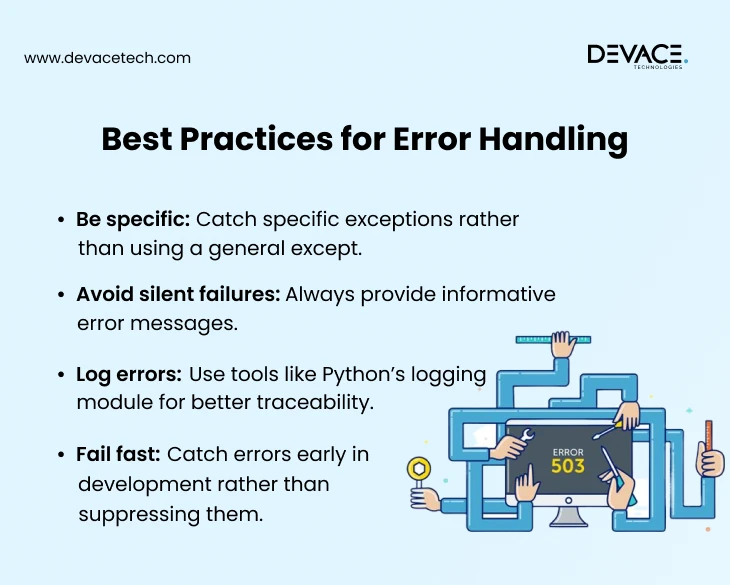
For example, when working with a division, you might encounter a ZeroDivisionError. By using try…except, you can provide a fallback message instead of stopping the entire program.
Below is an example:
try:
number = int(input("Enter a number: "))
result = 100 / number
print(f"Result: {result}")
except ZeroDivisionError:
print("Error: Division by zero is not allowed.")
except ValueError:
print("Error: Please enter a valid number.")
Now, we can also discuss another case such as having more complex programs.
In such cases, developers can leverage by using the else and finally blocks help maintain cleaner code. So, the else block runs when no error occurs, while finally is used for tasks that should run regardless of the error outcome, like closing a file or releasing resources. Custom exceptions can also be raised using the raise statement for better error communication. This practice makes your code easier to debug and more user-friendly by preventing unexpected crashes.
We have given another example below:
def validate_age(age):
if age < 18:
raise ValueError("Age must be 18 or older to register.")
else:
print("Registration successful!")
try:
validate_age(16)
except ValueError as error:
print(error)
finally:
print("Thank you for using our service.")
Get scalable, readable, and maintainable code
Leverage Python’s Built-in Features
Python is used for its top-notch security features. Python developers must leverage coding tasks, improving both performance and readability. For this, functions like sum(), min(), max(), enumerate(), and zip() can reduce the need for manual loops. These functions are optimized and reduce the risk of writing inefficient or error-prone code. Below is an example of it:
# Using built-in functions numbers = [4, 7, 2, 9, 1] total = sum(numbers) maximum = max(numbers) Here is a look for the difference between the codes: For example, instead of writing a loop to sum a list of numbers:
# Without built-in function
numbers = [1, 2, 3, 4, 5]
total = 0
for num in numbers:
total += num
print("Sum:", total)
You can simply use the built-in sum() function:
# Using built-in function
numbers = [1, 2, 3, 4, 5]
print("Sum:", sum(numbers))
Python Commenting Best Practices
Another best practice for Python coding is making sure you are following Python commenting techniques. Python provides several techniques for commenting code that helps in simplifying the code and also enabling you to write clean, understandable, and maintainable code. The usage of comments in coding helps to explain the purpose of code, making it easier for others and yourself to understand our logic when revising the code alter.
Speaking of Python commenting best practices, there are different types such as single-line comments, multi-line comments, and multi-line string as a comment (docstrings).
Single-line Comments:
- Use the # symbol for short comments.
# This is a single-line comment x = 5 # Assigning value to x print(x) # Printing the value of x
Multi-line Comments (Using #):
- You can use multiple # symbols to create multi-line comments.
# This is a multi-line comment # explaining the next block of code y = 10 print(y)
Multi-line String as a Comment (Docstrings):
- Triple quotes (”’ or “””) can be used as a comment block, but they are primarily for documentation purposes.
""" This function adds two numbers and returns the result. """ def add(a, b): return a + b
What to keep in mind for Python Commenting?
Below are some of the best practices that Python developers must follow to write maintainable and scalable code.
- Be concise and clear.
- Explain the “why” rather than the “how.”
- Use comments sparingly for obvious code.
- Maintain comments as code evolves.
Use List Comprehensions
In this blog, one of the last best Python coding practices we have is using list comprehensions. These list comprehensions allow you to generate lists with a single line of code, making the code more concise and faster as compared to the traditional loops.
This practice is used for transforming data and filtering elements in a readable way. But if you are performing complex operations then avoid using them as they cause readability issues. See an example below:
# Good: List comprehension
even_numbers = [x for x in range(20) if x % 2 == 0]
# Bad: Loop-based approach
even_numbers = []
for x in range(20):
if x % 2 == 0:
even_numbers.append(x)
Conclusion
Mastering Python best practices is essential for writing code that has high performance. Whether you’re a beginner or an expert developer, understanding these best practices is essential for managing and executing projects seamlessly.
From PEP 8 style guide, documenting code, optimizing loops and conditions to using virtual environments, and following Python best practices, you can make your code professional.
Hire Python Developers From Devace Technologies
Are you looking for Python developers who have command over all the best practices powered by hands-on experience? Look none other than Devace Technologies, as we help you find the best Python developers who make sure that the code of your project is optimized and not messy. Get in touch with us and take your project to new heights with us!
Frequently Asked Questions
Why the Python coding best practices is important?
When the code is messy it causes bugs and errors in the development. However, if you want to write maintainable, scalable, and readable code then it is extremely important to follow Python coding best practices such as following PEP 8 style guide, DRY principle, using Python’s built-in features and much more.
What are the best practices for Python method comments?
The best practice to follow for Python method comments is using clear and concise docstrings to explain a method’s purpose, inputs, outputs, and exceptions, following the PEP 257 style guide for consistency.
What are some Python best practices when building user modules?
Building modules in Python requires great attention and therefore, Python developers must follow the best practices that are used for developing modules. It includes using structure modules with reusable functions, avoiding circular imports, use __init__.py for organization, and documenting code properly for clarity.
How many types of comments are common in Python?
Python has two common comment types: single-line comments using # and multi-line comments using triple quotes (“”” “””). For example, look up to the above sections that have detailed explanations.
What is the best practice for Python main function?
The best command for Python main function is if __name__ == “__main__”: to define the main function, ensuring the code runs only when executed directly, not when imported as a module
